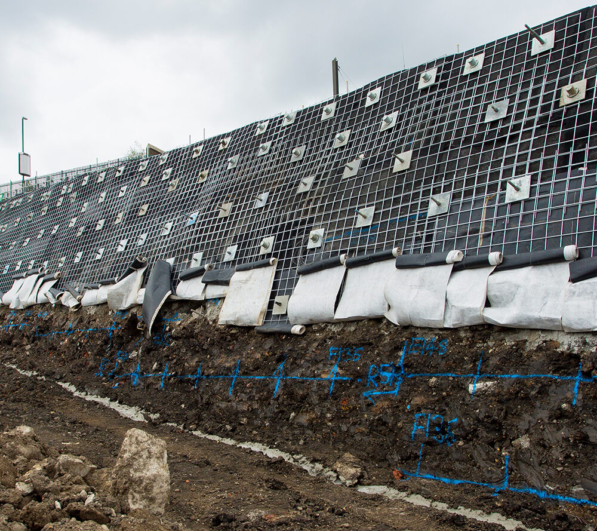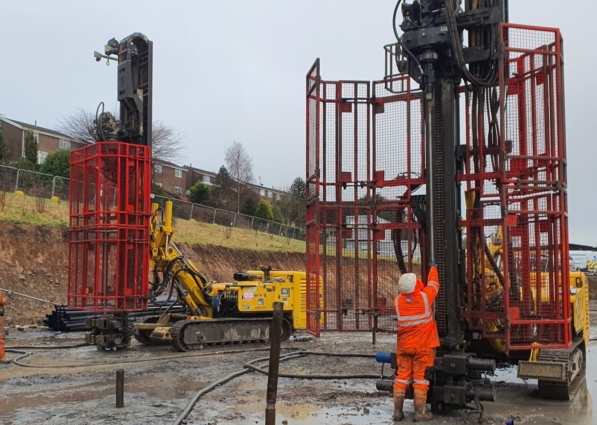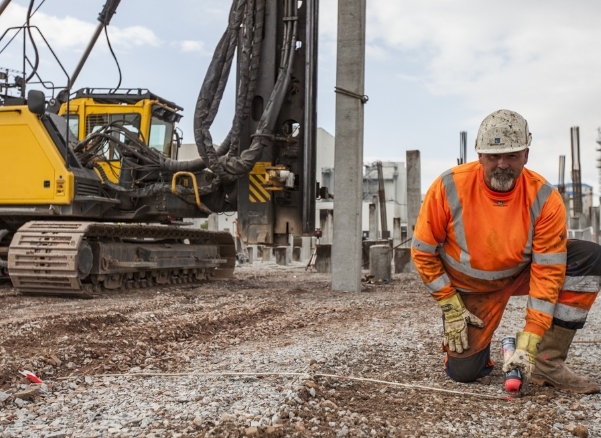What is Ground Engineering?
Table of Contents
- The Role of Ground Engineering
- Where Did Ground Engineering Originate?
- Key Principles of Ground Engineering
- Where is Ground Engineering Used?
- Benefits of Ground Engineering
The Role of Ground Engineering
Ground engineering, also known as geotechnical engineering or geotechnics, is an essential branch of civil engineering focused on the engineering behaviour of earth materials. [1] Essentially, it involves the practices of geology and engineering to ensure the structural integrity and stability of building structures.
Geotechnical engineers use geology, hydrogeology and mechanics to predict how ground conditions will affect a construction project and the long-term performance of the structures being built. Geotechnical engineers also perform field investigations, carry out soil testing and identify potential hazards.

Where Did Ground Engineering Originate?
The origins of ground engineering date back thousands of years, when ancient Egyptians, Greeks and Romans developed early techniques to manage and manipulate ground conditions for constructing monuments and infrastructure. The Great Wall of China and Roman aqueducts are prime examples of early ground engineering.
Modern ground engineering began to evolve in the 18th and 19th centuries with the development of systematic geological and soil surveys. Engineers like Karl Terzaghi, often referred to as “the father of soil mechanics and geotechnical engineering”, developed theories and practices during the early 20th century that laid the groundwork for contemporary methods. [2] Today, ground engineering remains a crucial part of most, if not all, construction projects.

Key Principles of Ground Engineering
Ground engineering plays a crucial role in the construction of foundations and structures that interact with the ground. The key principles of ground engineering include:
Soil and Rock Mechanics
Soil and rock mechanics are at the core of ground engineering. Soil mechanics deals with the behaviour of soil under various conditions and stresses, including its ability to support structures without undergoing unacceptable levels of movement or deformation. Similarly, rock mechanics studies the behaviour of rock masses and their response to field loads and environmental conditions. Understanding the properties of these materials such as density, permeability and shear strength is critical for all subsequent design and analysis.
Site Investigation
Before any construction begins, a thorough investigation of the site is carried out. This involves drilling and sampling to determine the geology and any potential hazards such as landslides, sinkholes and earthquakes. Site investigations provide essential data that influences decisions on the type of foundation and construction method to be employed.
Foundation Engineering
A principal focus of ground engineering is designing foundations that can safely carry the loads from superstructures to the ground. This includes determining the appropriate type of foundation (shallow or deep) and its size based on the load characteristics and the properties of soil or rock.
Construction Techniques
With design and analysis in place, effective construction techniques must be performed. Modern ground engineering methods help improve the soil characteristics and make the grounds more suitable for construction, especially in challenging environments.
Risk Management and Monitoring
After construction, monitoring the behaviour of the ground and the structures it supports is essential for ensuring long-term safety and performance. Regular risk maintenance and monitoring based on these observations can prevent structural failures and extend the lifespan of the construction.
Where is Ground Engineering Used?
Ground engineering is used across various construction projects including [3]:
- Building foundations such as housing, schools, shopping centres, wind farms, dams and bridges
- Infrastructure such as roads, railways, airports and flood defence embankments
- Underground structures such as tunnels, metro stations, car parks, water and sewerage systems
- Mines
- Cliffs and hilly terrains
Benefits of Ground Engineering
The implementation of ground engineering in construction projects offers many benefits:
- Enhanced Safety and Stability – Ground engineering ensures that the foundations of structures are safe and stable. By assessing soil properties, groundwater conditions and other factors, geotechnical engineers design foundations that adequately support the loads of the structure and resist potential failure modes such as sinking, sliding or overturning.
- Risk Mitigation – Through site investigations and analysis, ground engineering helps in identifying and mitigating risks associated with ground conditions including landslides and earthquakes. By addressing these issues proactively, projects can avoid costly repairs and dangerous structural failures.
- Cost Savings – Proper ground engineering can lead to significant cost savings in construction projects. By optimising foundation design, the use of materials can be minimised, while ensuring structural integrity and longevity. Additionally, dealing with potential ground-related issues reduces the likelihood of the high costs associated with structural failures.

Sources
- ICE. (n.d). Geology, Geotechnical and Ground Engineering. Retrieved 4th November 2024, from:
https://www.ice.org.uk/areas-of-interest/geology-geotechnical-and-ground-engineering - Wikipedia. (2024). Geotechnical Engineering. Retrieved 4th November 2024, from:
https://en.wikipedia.org/wiki/Geotechnical_engineering - Ground Fourm (n.d). What is Ground Engineering? Retrieved 4th November 2024, from:
https://ground-forum.org.uk/home/what-is-ground-engineering/








